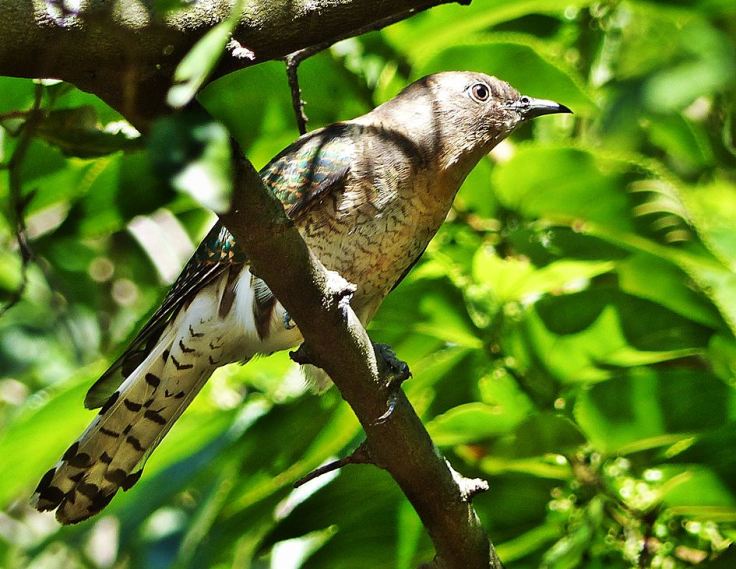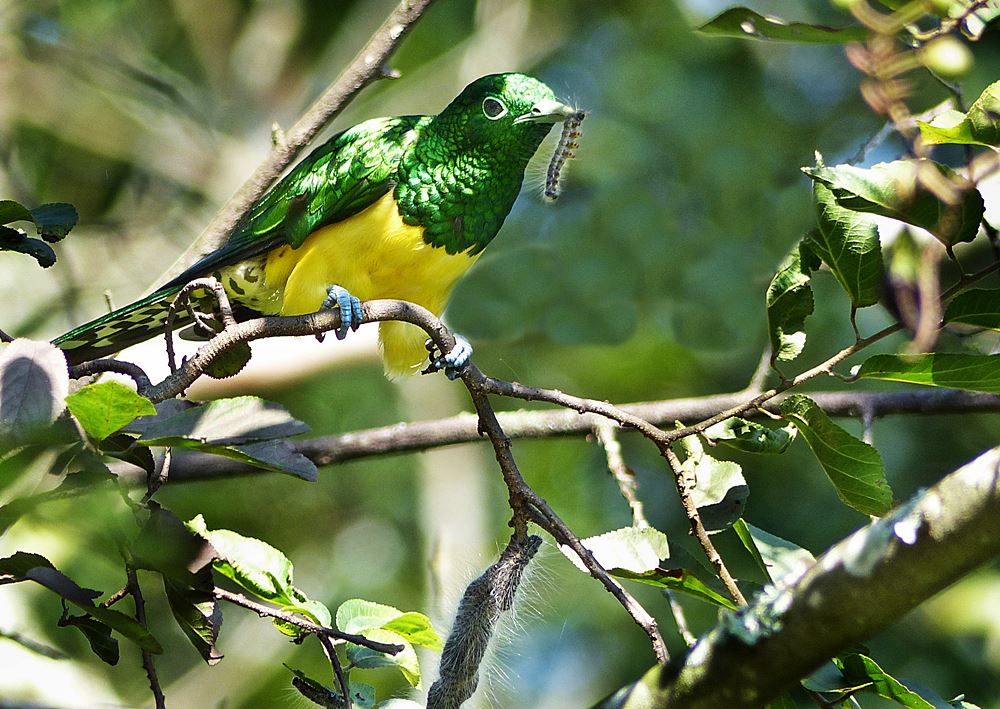Perfect hosts are hard to find. Processionary caterpillars only accept hospitality from a handful of host plants. One of these is the Cross-berry, which the caterpillars return to each year, in our suburban garden. In turn, the perfect host also accommodates the predatory birds and insects that are attracted to the caterpillars, including the iridescent male African Emerald Cuckoo pictured above.
The name Cross-berry describes the distinctive berry that is divided into four as if by a cross. The berries are preceded by mauve flowers that cover the plants in early summer.

The Cross-berry can take the form of a dense shrub or single-stemmed small tree. Each year in the autumn the Cross-berry plants (Grewia occidentalis) are almost completely defoliated by the busily chomping caterpillars.

As a host plant, presumably it is adapted to this process, and each year it produces new leaves, much as a deciduous tree does, and suffers no ill effects from hosting and feeding the caterpillars, more properly referred to as the larvae of the Reticulate Bagnet (Anaphe reticulata). Not only does it go on to produce a fresh flush of leaves in the spring, but also its showy mauve flowers.
 Female African Emerald Cuckoo in our Cross-berry tree
Female African Emerald Cuckoo in our Cross-berry tree
The flowers and fruit of the Cross-berry provide food for birds and other animals, and its caterpillars attract (among others) the African Emerald Cuckoo and the praying mantis, both apparently undeterred by the caterpillars prickly hairiness .★

Posted by Carol at letting nature back in








September 8, 2016 at 6:20 pm
A different species of processionary moth caterpillars were a hazard in Southern Spain (I lived there for 10 years)- coming into physical contact with one causes a nasty rash and give off dust that can cause respiratory problems and they are particularly toxic for children and animals. Your cuckoo is gorgeous!
LikeLike
September 9, 2016 at 5:58 am
Fortunately those in South Africa are not a health hazard. Yes, the cuckoo is lovely and despite its colouring not often seen as it seems to stick to the tree canopy. Its distinctive call, a feature of early summer, is conventionally represented in English as “hallo Georgie!”. Interestingly, the European cuckoo of cuckoo clock fame does visit parts of South Africa as a non-breeding migrant, but when here it is silent.
LikeLiked by 1 person